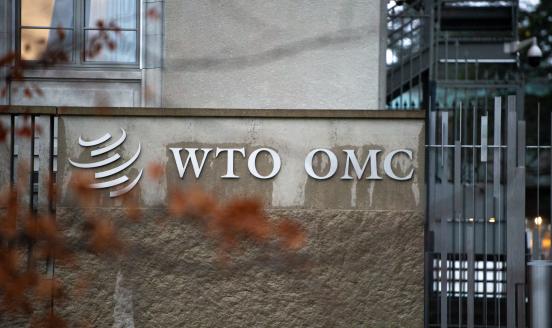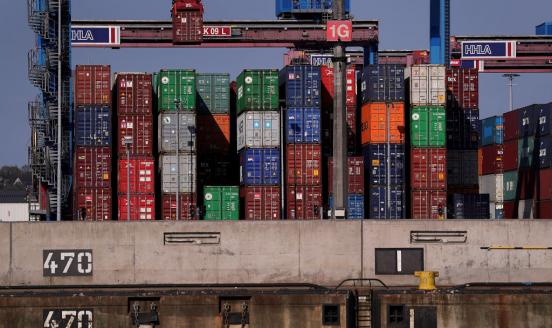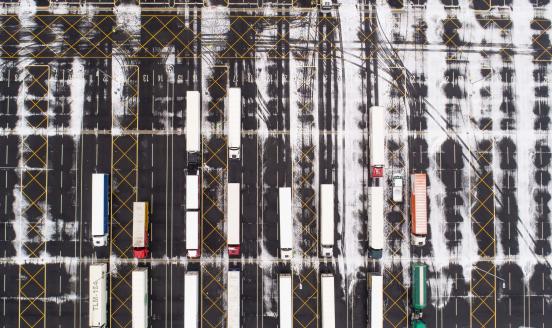Moroccan job market issues, and labour trends in the Middle East and North Africa
Morocco is an interesting case of structural labour market disequilibrium despite respectable growth, and illustrates the issues facing the region’s o

One cannot speak of a common jobs problem across the Middle East and North Africa (MENA) region. The countries at war – Syria, Yemen, Libya – are, of course, each a story in themselves. Some countries not at war, notably Lebanon and Jordan, have seen huge inflows of refugees that have created large downward pressures on wages, especially in the low-skilled informal sector.
The remaining countries can be divided into two main groups. The energy importers such as Egypt, Morocco, and Tunisia, have been unable to create sufficient jobs, especially for the young, and are the source of large diasporas. In contrast, the energy exporters – such as those countries that make up the Gulf Cooperation Council (Bahrain, Kuwait, Oman, Qatar, Saudi Arabia, and the United Arab Emirates) – have generated jobs in excess of their effective labour supply, have little emigration, and have attracted foreign workers and their families, who add 30-80% to their native population. There is underemployment of natives in the Gulf, but it is difficult to relate it to low demand for labour. Algeria displays some of the labour market characteristics of the energy importers, even though it is an energy exporter. Algeria has relatively modest energy endowments compared with its large population, has high youth unemployment as well as a large diaspora, and hosts almost no foreign-born workers.
Official unemployment numbers, which have declined over this period but remain near 10%, provide only a very partial picture of the state of the labour market in Morocco.
As an illustration of the labour market issues facing the oil importers, Morocco is a particularly interesting case of structural labour market disequilibrium despite respectable growth. Morocco’s GDP grew at around 4.5% a year from 2000-2014, a shade over 3% per capita. This resulted in some job creation, but fell way short of the increased labour supply. Official unemployment numbers, which have declined over this period but remain near 10%, provide only a very partial picture of the state of the labour market in Morocco.
The underlying demographic and employment numbers tell a more complete story. The number of Moroccans employed increased from 10,200,000 to 11,800,000 from 2000-2014, or by 115,000 per year. Over this period, the labour force (people of working age [15-65]) grew rapidly at 2% a year, or by 383,000 on average, and consequently the share of the working-age population in employment declined from 53% in 2000 to 48% in 2014[1]. Thus, only roughly one-third of those new additions to the working-age population sought and found employment. Sharply rising school enrolment accounts for a substantial part of this gap, but even among the population aged 25 and above the share of employed declined by over two percentage points. Many young people emigrated. According to the OECD, from 2000-2014, emigration from Morocco to OECD countries was on average about 100,000 per year[2], including people of all ages.
The number of Moroccans employed increased from 10,200,000 to 11,800,000 from 2000-2014, or by 115,000 per year.
Also important is underutilised labour in the countryside and among the female population. Over 35% of the Moroccan labour force is employed in agriculture and almost 42% of this labour force is engaged in unpaid work (“nonrémunéré”), suggesting very low productivity. Female participation in the relevant age group in Morocco is very low, around 26%, yet women are increasingly educated. Precarious employment is prevalent across the Moroccan economy. For example, only about 20% of workers have health insurance. Another prominent feature of the labour supply is the many new diplômés and university graduates who are looking for good formal-sector jobs and not finding them.
The demand for workers in Morocco has grown slowly in part because growth has been job-poor. In fact, labour productivity growth was 3.4% a year from 2000-14. Why was it so rapid? Labour productivity in Morocco is low to start with. Moreover, Morocco exhibits a high rate of savings and investment: 32% of GDP in 2014. According to a comprehensive recent study by Toufik Abbad, capital deepening played a big role in Morocco’s recent development. The capital/labour ratio has grown at 4.9% a year from 2000-2014, far faster than nearly all comparable countries. This large investment was associated with declining rates of capital productivity and relatively low rates of Total Factor Productivity growth (1.1% a year). A disproportionate share of this investment was public and not always efficient. Still, infrastructure investment was complementary to private investment and to labour, and almost certainly helped boost its productivity.
Investment in human capital also played a role. Morocco’s labour force remains low-skilled. According to UNESCO, in 2015 17% of male adults and 37% of female adults were illiterate. However, school enrolment rates have increased, and outcomes are improving. For example, adult literacy rates have improved by some 15 percentage points over the last 10 years.
While it is difficult to be sure how much of Morocco’s labour productivity growth may be attributed to technological change, it appears to play a significant role. As Toufik Abbad shows[3], nearly all of Morocco’s labour productivity improvement is within sectors and relatively little is due to shifts from low value added to high value-added sectors. Morocco’s capacity to adopt technology increased as workers became more educated and as it has become a far more open economy. Insofar as Morocco’s technology adoption conforms to international trends, it is skill-biased – meaning that it tends to substitute unskilled workers and is complementary to skilled workers. This, together with capital deepening, would help explain the widespread perception of a skill shortage in Morocco and the comparatively high wages of skilled workers.
One prominent manifestation of Morocco’s rapidly increasing labour productivity is the declining share of employment in manufacturing, even as the sector’s ‘value-added’ grows. According to the Haut Commissariat au Plan, over 2000-2014 Morocco’s manufacturing sector created jobs in food processing, furniture and metalwork and in the high-value-added automobile sector. But nearly all these job gains were offset by a large reduction in employment in the garments and textile sector[4]. Nearly all of Morocco’s net employment growth is in services and construction.
One prominent manifestation of Morocco’s rapidly increasing labour productivity is the declining share of employment in manufacturing, even as the sector’s ‘value-added’ grows.
All this raises the question, however, as to why the market for labour does not adjust faster through lower wages, or why labour demand does not grow more rapidly in the light of labour’s increased productivity. One can cite a host of rigidities in the product market (e.g. lack of contestability) and labour market (e.g. strict hire and fire rules) of Morocco that prevent this, which are well known. I have little doubt that these rigidities help explain the failure of the labour market to adjust in the formal sector. But these explanations are not sufficient. There is, for example, much informality in Morocco (some 30% of work is in the informal sector), suggesting flexibility in a large part of the economy. Why have not wages declined to absorb the surplus labour in the informal sector?
As in the case of the Gulf countries, we can refer to skill-mismatch, etc., but a complete explanation eludes us. I would speculate that the speed of change matters. Morocco is an economy undergoing a large-scale demographic and structural transformation in a very short time. A notable change is the formalisation of labour relations, which previously were based on established customs and norms, and now are – in the formal sector – governed by strict hire-and-fire rules.
Will the Moroccan labour market get better soon? It is true that labour-force growth is slowing sharply due to the drop in fertility over the past generation. In 2014 the labour force grew at less than 1.5% a year compared to 2.5% a year in 2000, and according to United Nations’ projections, will grow at less than 0.4% a year from 2025-2050. With luck, GDP growth could be quite solid in coming years as Europe recovers and oil prices remain low. But, unfortunately, other factors will continue to aggravate the employment problem. Technology adoption will almost certainly continue to save more labour, especially low-skilled labour. Morocco’s savings and investment rates are likely to remain high and the capital/labour ratio will continue to increase rapidly. Emigration is constrained. More women are educated and want to work. And still a large part of the population is in the countryside, looking for a better life. So, I don’t expect that Morocco’s employment problem is going away in the foreseeable future[5].
Policy cannot hope to transform Morocco’s surplus labour problem quickly, but can contribute to its mitigation. Beyond the recipes on how to accelerate growth (make markets more contestable, etc.), Moroccans should recognise that service sectors, and not only or mainly manufacturing, are the job-creators. They need to channel more finance to small enterprises that account for the bulk of job creation in Morocco. They need to conclude international migration agreements, which, I admit, is easier said than done at present. Should Morocco invest more in education? The answer is almost certainly no – instead, the overriding need appears to be to make education spending more targeted, selective and less wasteful.
[1] Haut Commissariat au Plan, 2017
[2] OECD International Migration Database. Nearly all of the estimated 5.6 million Moroccans living abroad are in the OECD, and less than 200,000 are in the Gulf.
[3] Abbad, T. (2017). Capital accumulation and productivity gains in Morocco (No. 1725). OCP Policy Center.
[4] Haut Commissariat au Plan. (2015). Note sur le marché du travail au Maroc entre 2000 et 2014.
[5] Conclusion similar to Agenor P-R and El Aynaoui K. (2015) Morocco: Growth Strategy for 2025. OCP Policy Center.



